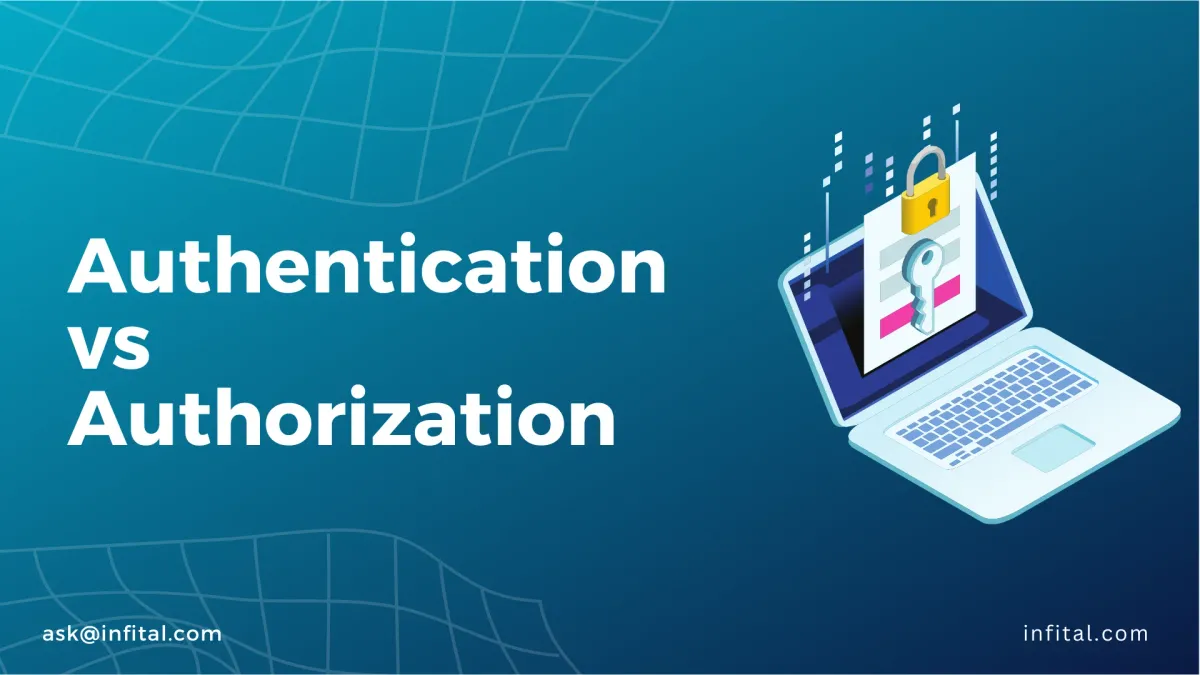Unlocking the Secrets of Authentication and Authorization: Your Guide to Online Security
Authentication confirms your identity, while authorization controls what you can do once authenticated.

In the ever-evolving digital landscape, ensuring the security of our online interactions has become paramount. Two essential processes, authentication and authorization, play a pivotal role in safeguarding sensitive data and controlling access to valuable resources. While these terms may sound similar, they serve distinct and crucial purposes. In this comprehensive guide, we will delve into the differences between authentication and authorization, understanding their significance, and adopting best practices to fortify our digital fortresses.
The Foundation of Security - Authentication
Authentication, often referred to as AuthN, serves as the first line of defense in the realm of information security. This process verifies the identity of users or services, ensuring that they are who they claim to be. The underlying principle is simple - to gain access to a system or application, one must prove their authenticity. Let's explore the various authentication methods used to accomplish this.
Passwords and Knowledge-Based Authentication
Passwords have long been a common method of authentication. Users create unique passwords to protect their accounts, and when logging in, the system compares the entered password with the stored one. While passwords are widely adopted due to their simplicity, they are not without their vulnerabilities. Weak passwords, reuse across multiple accounts, and susceptibility to phishing attacks pose significant risks.
To bolster password-based authentication, knowledge-based authentication (KBA) adds security questions as an additional layer. Users answer predetermined questions during the account setup process, and later, the system prompts for these answers to verify their identity. This combination of something the user knows (password) and something only they should know (answers to security questions) enhances the overall security.
The Power of Possession - Something You Have
Beyond passwords, possession-based authentication utilizes physical items that only the rightful user should possess. Examples include smart cards, hardware tokens, or mobile devices. By requiring users to present these items during login attempts, the system adds an extra barrier against unauthorized access.
Modern possession-based authentication also encompasses biometric data, such as fingerprints or facial recognition. Biometric authentication offers an even more secure and convenient means of verification, as it is challenging to forge or duplicate one's unique physical traits.
Authorization - The Gateway to Access Control
While authentication validates one's identity, authorization (AuthZ) comes into play after successful authentication. AuthZ determines the level of access users or services should have within a system or application. In essence, it answers the question, "What can this authenticated entity do now?"
Granular Access Control
Authorization allows administrators to define fine-grained access controls tailored to specific roles and responsibilities. In a business setting, employees with different roles require varying levels of access to company resources. For instance, a sales representative should only access customer information relevant to their accounts, while management may need broader access to track overall performance.
By implementing granular access control, organizations can prevent unauthorized users from accessing sensitive data, reducing the risk of data breaches and internal security threats.
Role-Based Access Control (RBAC)
Role-Based Access Control (RBAC) is a widely used authorization model that simplifies access management. In RBAC, access rights are assigned based on job functions, creating predefined roles with corresponding permissions. This simplifies the process of granting and revoking access as users change roles within an organization.
For example, an RBAC system might have roles like "Administrator," "Manager," and "User." Each role has its set of permissions, ensuring that users are only granted the access necessary for their specific job responsibilities.
The Interplay Between Authentication and Authorization
Authentication and authorization work in tandem to create a robust security framework. While they serve different purposes, they are intricately connected to ensure the overall integrity of a system.
The Importance of Proper Authentication
The foundation of any secure system lies in proper authentication. Without accurately verifying users' identities, the entire authorization process becomes flawed. If malicious actors can circumvent authentication and impersonate legitimate users, any access controls set through authorization become meaningless.
The Role of Authorization in Context
Authorization relies on the authentication process to determine the entities seeking access. Once authentication is complete, the system can grant or deny access based on the user's role and the permissions assigned to that role. Consequently, effective authentication ensures that the authorization process is built on a solid foundation of verified identities.
Best Practices for Enhanced Security
Now that we have a clear understanding of authentication and authorization, let's explore some best practices to optimize the security of our digital interactions.
Implement Multi-Factor Authentication (MFA)
Multi-factor authentication (MFA) is a powerful tool to strengthen authentication. By requiring users to provide multiple pieces of evidence to prove their identity, MFA adds an additional layer of protection against unauthorized access. Combining passwords with possession-based factors like smartphones or biometric data significantly reduces the risk of compromised accounts.
Regularly Audit Access Permissions
As your organization grows and roles change, it is essential to regularly audit access permissions. Periodically review user roles and their associated access rights to ensure that access is still appropriate for their current responsibilities. Revoking access promptly when an employee changes roles or leaves the organization can prevent potential security breaches.
Employ the Principle of Least Privilege
Adopt the principle of least privilege (PoLP) when defining access permissions. In PoLP, users are only granted the minimum level of access required to perform their tasks. This minimizes the potential damage if an account is compromised, as attackers will have limited access to sensitive data or critical systems.
Conclusion
In conclusion, understanding the distinction between authentication and authorization is essential for fortifying your digital security. Authentication confirms your identity, while authorization controls what you can do once authenticated. By implementing best practices for both processes, such as multi-factor authentication, regular audits, and the principle of least privilege, you can create a robust security framework to protect your valuable information from cyber threats. Stay vigilant, stay secure, and safeguard your digital world.
